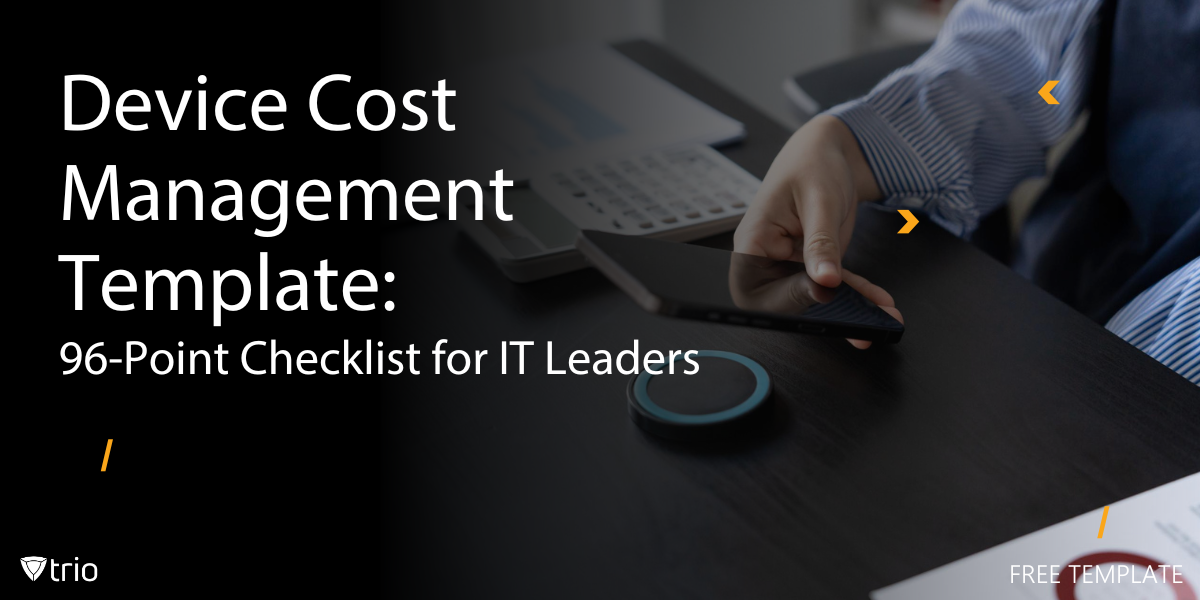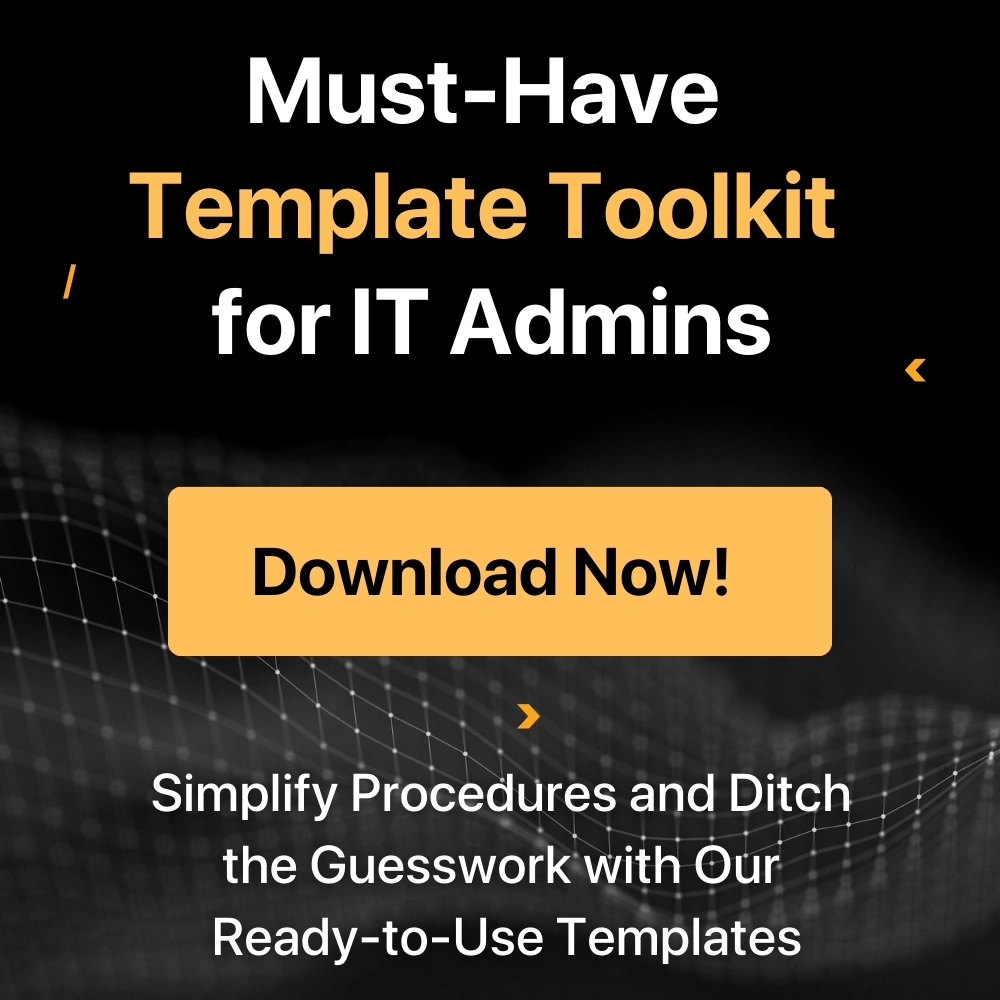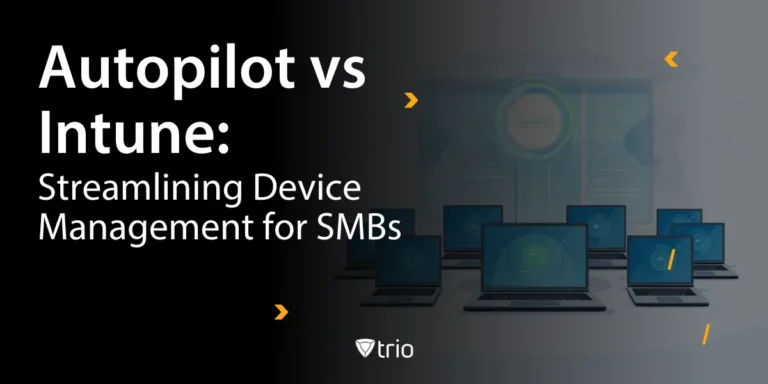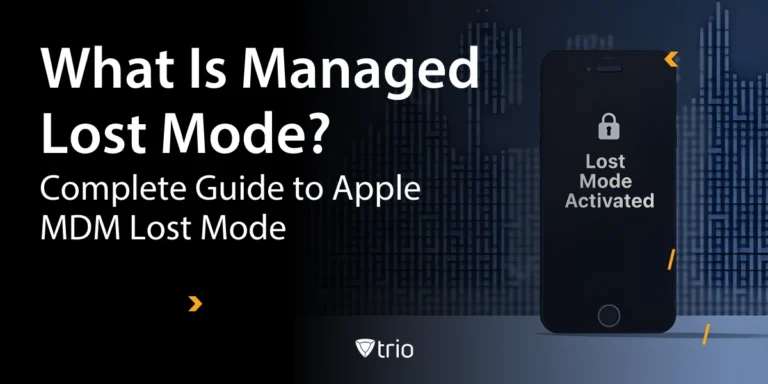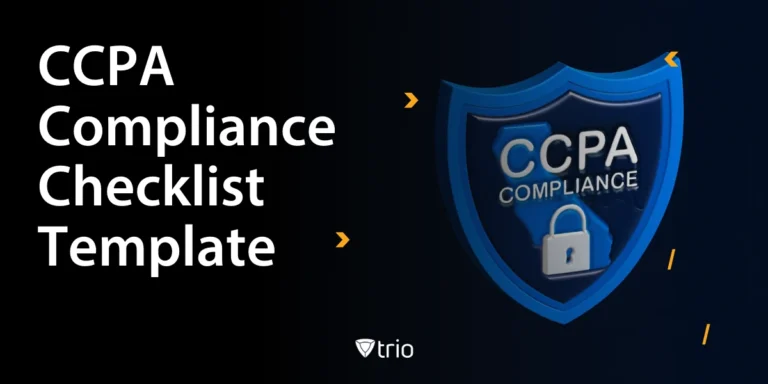Managing mobile devices is critical for modern businesses, but the costs involved can quickly spiral out of control without proper oversight. For small and medium-sized businesses (SMBs), optimizing mobile device expenditure is essential to ensure operational efficiency, security, and budget alignment.
This blog explores mobile device cost management—how organizations can control and reduce expenses related to purchasing, deploying, maintaining, and retiring mobile and unified devices. We’ll explain why cost management matters, key cost drivers, practical strategies for savings, and how Unified Endpoint Management (UEM) solutions can play a pivotal role.
TL;DR
- Critical for SMBs: Mobile cost management controls hardware, software, support and security expenses while maintaining productivity/compliance
- 5 Key Cost Drivers:
- Acquisition
- Licensing
- Deployment
- Maintenance
- Lifecycle management
- Top Challenges: Device sprawl + limited IT staff complicate oversight
- Solution: UEM platforms provide:
- Centralized visibility
- Automation
- Lifecycle tracking
- Cost-Reduction Strategies: Device standardization, leasing, policy enforcement, and regular audits
- Key Stakeholders: IT managers, finance, procurement, and security officers
- Bottom Line: Safeguards budgets while enabling secure, scalable operations
Why Mobile Device Cost Management Matters
The rapid proliferation of mobile devices—smartphones, tablets, laptops, IoT gadgets—has transformed business operations. Yet, with increasing device counts and complexity, managing the total cost of ownership (TCO) becomes a challenge.
Key Reasons Cost Management is Critical
- Budget Control: Mobile devices often represent a significant percentage of IT budgets. Without proactive cost management, businesses risk overspending on hardware, software licenses, support, and upgrades.
- Operational Efficiency: Efficient spending supports business agility. Excessive or misaligned costs may divert funds from critical projects or innovations.
- Security and Compliance: Cost management ensures adequate investment in security tools and software updates, preventing vulnerabilities that can lead to costly breaches.
- Lifecycle Management: Proper cost control includes managing device lifecycle to avoid premature replacements or expensive downtime due to aging hardware.
- Sustainability Goals: Optimizing device usage and procurement reduces electronic waste, supporting corporate responsibility initiatives.
SMBs and enterprises alike benefit from robust mobile device cost management, which balances quality, security, and financial stewardship.
Key Cost Drivers in Mobile Device Management
Understanding where money goes is the first step to optimizing spend. Major cost categories include:
1. Device Acquisition Costs
The initial purchase price of mobile hardware varies widely based on brand, specifications, quantity discounts, and vendor agreements.
- High-end smartphones and rugged tablets command premium prices.
- Bulk purchasing or leasing can influence acquisition costs.
- Accessories (cases, chargers, peripherals) add to upfront expenses.
2. Software Licensing and Subscriptions
Mobile devices require licenses for operating systems, productivity apps, security suites, and management tools.
- Subscription-based models (SaaS) introduce recurring costs that can escalate with user count.
- Specialized apps for industry compliance or business functions may require additional fees.
3. Deployment and Configuration
Costs related to imaging, setup, policy enforcement, and application deployment.
- Manual configuration increases labor costs; automation reduces expenses.
- Integration with existing IT infrastructure requires planning and skilled resources.
4. Support and Maintenance
Help desk, repairs, warranty claims, and device replacements represent ongoing operational costs.
- Frequent hardware failures or software issues increase support overhead.
- Extended warranties and insurance plans add fixed costs.
5. Security and Compliance
Investments in endpoint security, encryption, patch management, and compliance auditing.
- Failure to invest appropriately can lead to breaches with far greater financial impact.
6. Device Lifecycle and Replacement
Replacing or upgrading devices at the optimal time avoids performance degradation or security risks.
- Premature replacements waste capital; delayed replacements increase downtime risk.
Free Device Cost Management Checklist
Take control of your mobile device expenses with our comprehensive checklist designed specifically for SMBs. This downloadable resource includes:
- Device Inventory Audit Template - Track all your mobile assets and their costs
- Cost Driver Assessment Matrix - Identify your biggest expense categories
- Vendor Negotiation Checklist - Key points to discuss with suppliers
- Security Cost Calculator - Estimate the true cost of security breaches
- ROI Measurement Framework - Track your cost-saving initiatives
- Lifecycle Management Timeline - Optimize device replacement schedules
Challenges SMBs Face in Managing Mobile Device Costs
SMBs encounter specific hurdles in controlling mobile device expenses:
- Limited IT Staff: Small teams have little bandwidth to track and optimize device spend manually.
- Device Sprawl: Multiple device types and OSes complicate unified cost visibility.
- Shadow IT: Unapproved devices or apps increase unexpected costs and security risks.
- Vendor Complexity: Multiple vendors with different contracts and billing cycles challenge cost transparency.
- Rapid Technology Changes: Frequent OS updates and hardware innovations pressure SMBs to upgrade often.
Addressing these challenges requires deliberate strategies supported by the right technology.
How Unified Endpoint Management (UEM) Drives Cost Efficiency
Unified Endpoint Management (UEM) platforms enable businesses to manage all endpoints—mobile devices, laptops, desktops, and IoT—from a single interface. UEM helps streamline cost management in several ways:
Centralized Visibility and Reporting
UEM dashboards consolidate device data, providing real-time insights into:
- Device inventory and utilization.
- License usage and compliance.
- Patch and update status affecting device security and lifespan.
This transparency identifies underutilized devices or licenses that can be reassigned or retired.
Automated Deployment and Configuration
UEM automates provisioning and policy enforcement, reducing costly manual labor and errors. Faster deployment shortens time-to-productivity and avoids duplicate spending.
Lifecycle Management
Track device age, warranty status, and performance metrics to schedule replacements at optimal intervals, balancing cost with performance and security needs.
Security Cost Reduction
By automating patch management and enforcing security policies, UEM reduces the risk of costly breaches and regulatory fines.
License Optimization
UEM helps monitor software license consumption, avoiding over-licensing or penalties for non-compliance.
Practical Strategies for Mobile Device Cost Management
Alongside UEM, here are actionable strategies businesses can implement:
1. Adopt a Device Leasing or Financing Model
Leasing spreads costs over time, preserves cash flow, and facilitates scheduled upgrades.
2. Standardize Device Models and Vendors
Standardization simplifies management, reduces support complexity, and often unlocks volume discounts.
3. Enforce Strong BYOD and COPE Policies
Clearly define and enforce Bring Your Own Device (BYOD) or Corporate-Owned Personally Enabled (COPE) policies to control costs and risks.
4. Implement Regular Device Audits
Periodically audit device usage, condition, and compliance to identify unused or underperforming assets.
5. Optimize Software Licensing
Review license allocations regularly and reassign or terminate unused subscriptions.
6. Automate with UEM Solutions
Use UEM platforms to centralize management, automate repetitive tasks, and generate actionable cost insights.
7. Provide User Training
Educate employees on device usage policies to reduce damage, loss, and misuse that drive unexpected expenses.
The Role of Analytics and Data-Driven Decision Making
In today’s data-driven world, leveraging analytics is essential for effective mobile device cost management. Unified Endpoint Management (UEM) platforms collect vast amounts of data across your entire device fleet, from usage statistics to security compliance and software deployment. By analyzing this data, SMBs gain actionable insights that help optimize spending and resource allocation.
Key benefits of analytics in cost management include:
- Identifying Underutilized Devices and Licenses: Analytics reveal which devices are rarely used or which software licenses remain idle, enabling you to reassign or retire assets rather than incurring unnecessary costs.
- Forecasting Future Expenses: Historical usage and support data allow finance and IT teams to predict when devices will need replacement or upgrades, helping to budget proactively.
- Optimizing Procurement: Understanding device performance trends and failure rates helps inform purchasing decisions, allowing you to negotiate better terms or choose cost-effective models tailored to user needs.
- Monitoring Compliance Costs: Data on patch levels, security incidents, and audit outcomes guides investment in security tools that reduce risk and avoid costly penalties.
- Measuring Impact of Cost-Saving Initiatives: Analytics provide feedback on whether strategies such as device standardization or leasing agreements are delivering expected financial benefits.
By harnessing the power of analytics, SMBs transform mobile device cost management from reactive troubleshooting into strategic, data-informed planning—ultimately maximizing ROI and operational efficiency.
Cost Implications of Device Security Failures
While cost management often focuses on reducing direct expenses, it’s equally critical to consider the hidden and often catastrophic costs associated with device security failures. Mobile devices that are compromised can lead to data breaches, ransomware attacks, or operational shutdowns, which carry severe financial and reputational consequences.
Examples of cost impacts from security failures include:
- Regulatory Fines: Non-compliance with data privacy laws such as GDPR or HIPAA can lead to hefty penalties, sometimes amounting to millions, crippling SMB finances.
- Incident Response and Remediation: Breach investigation, forensic analysis, legal counsel, and system restoration efforts incur substantial costs beyond typical IT budgets.
- Operational Downtime: A compromised device can spread malware or force system lockdowns, causing work stoppages and lost revenue.
- Customer Loss and Brand Damage: Breaches erode customer trust, often leading to client churn and difficulty acquiring new business.
- Insurance Premium Increases: Cyber insurance rates typically spike after claims, increasing ongoing operating costs.
Investing in robust device security—including endpoint protection, patch management, and real-time monitoring through UEM—is a crucial part of cost management. Proactive security measures significantly reduce the probability and impact of costly incidents, making them essential components of a sustainable cost strategy.
Managing Costs in Hybrid Work Environments
The shift towards hybrid and remote work models has fundamentally altered mobile device cost structures. While enabling flexibility and employee satisfaction, these changes introduce new complexities that affect budgeting and cost management.
Key cost considerations for hybrid environments include:
- Increased BYOD Usage: Many employees use personal devices to access corporate data, reducing hardware acquisition costs but increasing security and support expenses due to device heterogeneity and inconsistent compliance.
- Higher Support Costs: Remote troubleshooting is often more time-consuming and complex, leading to increased IT support hours and expenses.
- VPN and Secure Access Licensing: Securing off-network access requires VPNs or zero-trust access solutions, adding subscription and infrastructure costs.
- Expanded Security Toolsets: Endpoint detection and response (EDR), multi-factor authentication (MFA), and mobile threat defense (MTD) solutions are critical but increase software costs.
- Device Replacement and Shipping: Remote employees may require device shipping, remote provisioning, or expedited replacements, adding logistical expenses.
To manage these costs, SMBs should:
- Establish clear BYOD policies balancing cost savings with security risks.
- Invest in UEM platforms that support remote device management and automated provisioning.
- Leverage remote support tools and self-service portals to reduce help desk overhead.
- Negotiate licensing agreements that scale efficiently with hybrid workforce sizes.
Effectively managing costs in hybrid models ensures businesses reap the productivity benefits of flexibility without compromising budget or security.
Vendor Management and Negotiation Tips for Mobile Devices
Vendor relationships significantly impact mobile device costs, yet many SMBs overlook strategic negotiation opportunities. Effective vendor management can unlock cost savings, improved service levels, and favorable contract terms.
Best practices for vendor management and negotiation include:
- Consolidate Vendors Where Possible: Reducing the number of suppliers simplifies management and can increase purchasing power, leading to volume discounts.
- Negotiate Multi-Year Contracts: Longer contracts often come with better pricing or added services, helping to stabilize costs over time.
- Benchmark Pricing: Research market rates and competitor offerings to ensure your costs are competitive before negotiating.
- Include Service Level Agreements (SLAs): Clearly define uptime, support response times, and replacement policies to avoid unexpected downtime costs.
- Leverage Total Cost of Ownership (TCO): Negotiate based on TCO, including hardware, software, support, and disposal, not just sticker price.
- Ask for Bundled Discounts: Vendors may offer better pricing if you bundle device purchases with software licenses or managed services.
- Evaluate Financing and Leasing Options: Compare buying versus leasing for cash flow advantages and upgrade flexibility.
- Request Trial Periods or Pilot Programs: Test products and services to ensure value before committing long term.
Regularly reviewing and renegotiating vendor contracts ensures SMBs maintain favorable terms aligned with evolving business needs and budget constraints.
Introducing Trio: Streamline Your Device Cost Management
As you work to optimize your IT costs, consider how Trio, our Mobile Device Management (MDM) solution, can support your efforts. Trio is designed to help businesses streamline their corporate device management, which directly impacts IT costs in several ways:
- Centralized Management: Trio allows you to manage all your corporate devices from a single platform, reducing administrative overhead and associated costs.
- Automated Provisioning: Quickly set up new devices with pre-configured settings, saving time and reducing IT support costs.
- Security Management: Implement robust security policies across all devices, potentially reducing costs associated with data breaches or compliance violations.
- App Management: Control which apps are installed on corporate devices, potentially reducing software licensing costs and improving productivity.
- Remote Support: Provide remote assistance to users, reducing the need for on-site IT support and associated travel costs.
- Asset Tracking: Keep track of all your mobile assets, helping to prevent loss and optimize device allocation.
By implementing Trio as part of your IT cost management strategy, you can achieve significant cost savings while improving the efficiency and security of your mobile device fleet.
Ready to Reduce Your Mobile Device Costs?
Experience professional mobile device management with zero commitment:
- 14-day free trial - Full access to all features
- No credit card required to get started
- Free setup assistance from our experts
- Personalized demo available this week
Conclusion
Effective mobile device cost management is vital for SMBs seeking to balance operational efficiency, security, and budget constraints in an increasingly mobile-first world. By understanding cost drivers—from acquisition and licensing to support and lifecycle replacement—and addressing common challenges such as device sprawl and limited IT resources, businesses can better control expenses and maximize device ROI.
Unified Endpoint Management (UEM) platforms are game-changers, offering centralized visibility, automation, and powerful analytics that transform cost management from a reactive task into a strategic advantage. When paired with practical strategies like device standardization, leasing, strong BYOD policies, and vendor negotiation, SMBs can significantly reduce costs while improving security and user experience.
Collaboration among IT managers, finance teams, procurement specialists, and security officers ensures that device cost management aligns with broader business goals and compliance requirements.
Ultimately, a proactive, data-driven approach to mobile device cost management empowers SMBs to scale confidently, stay secure, and invest wisely—driving sustained growth and competitive advantage.
Frequently Asked Questions
UEM is a platform that allows centralized management of all endpoints—mobile, desktop, IoT—enabling consistent policy enforcement and cost oversight.
Ideally quarterly, aligned with budgeting cycles and device audit schedules.
Yes, BYOD shifts hardware costs to employees, but requires strict policies to control security and support costs.
UEM tracks software licenses across devices, identifying unused or underutilized licenses to avoid waste and compliance risks.
Get Ahead of the Curve
Every organization today needs a solution to automate time-consuming tasks and strengthen security.
Without the right tools, manual processes drain resources and leave gaps in protection. Trio MDM is designed to solve this problem, automating key tasks, boosting security, and ensuring compliance with ease.
Don't let inefficiencies hold you back. Learn how Trio MDM can revolutionize your IT operations or request a free trial today!
